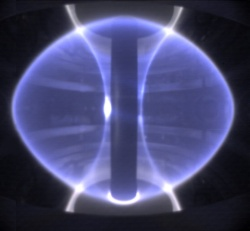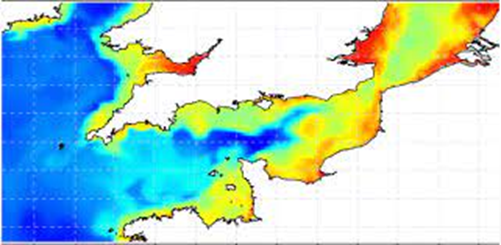
A multi-scale modelling algorithm from Magnetic fusion to the simulation of objects drifting in the ocean
Tackling the challenges of convergence on two-scale models to better transfer information

Physical phenomena can be observed and simulated at different scales and degrees of complexity. Multiscale modelling consists in a framework, based on fundamental principles, for building mathematical and computational models of such phenomena, by examining the connection between models at different scales. The technology is an algorithm especially designed to tackle the challenges of convergence on two-scale models widely used for fusion plasma. In particular, it gave the way to transfer information between the various scales while attending simulating a multi-scale phenomenon. The main benefit of this technology is to transfer information between the various scales while simulating a multi-scale phenomenon. Conveniently used to tackle many phenomena involving oscillations or heterogeneities, it provides effective models in constructive way and without much analytical material. The high degree of accuracy of the approach, yet without requiring detailed input, make it easy to use for homogenization.
Originally, a need related to the simulation of fusion plasma
In fusion research, tokamak and stellarator are toric devices in which a mixture of deuterium and tritium particles is heated and submitted to a strong magnetic field, in order to ignite a fusion reaction and extract the produced energy. The particle mixture performs oscillations with only a few frequencies, which are well separated from one another. Moreover, since in such devices the magnetic field is strong, those frequencies are high. Fusion plasma simulation is quite a challenge and needed new tools.
This work has been conducted by the Université Bretagne Sud in the context of magnetic fusion modeling and simulations under EUROfusion projects : CfP-WP15-ER/IPP-01 and CfP-WP14-ER-01/IPP-03″ (Verification of global gyrokinetic codes and development of new algorithms for gyrokinetic and kinetic codes) and CfP-WP14-ER-01/Swiss Confederation-01 (Synergetic numerical-experimental approach to fundamental aspects of turbulent transport in the tokamak edge).
From fusion to Oceanography
This fusion know-how and tool has been adapted in oceanography and coastal dynamics application through direct R&D collaboration with other research entities and oceanographic organisations.

A first case was dealing with new models to forecast the drift of objects in near coastal ocean submitted to tide and wind on a period of several weeks (collaboration between Université de Bretagne-Sud and a french oceanographic institution IFREMER).
A second case was dealing with numerical simulations of sand transport problems in order to build a Two-Scale Numerical Method to simulate dynamics of dunes in tidal area (collaboration between Université de Bretagne-Sud, UMMISCO, University of Strasbourg in France, Bambey University in Senegal, Cheikh Anta Diop University in Senegal).
Sand transport in tidal area play a major role in coastal erosion. The drift of objects in the ocean is potentially dangerous for human activities and marine ecosystems (example of drifting containers in the event of collision with ships or impact of oil spills on coastal areas). The positive impact of these projects was to increase the understanding of the different phenomena for more reliable predictions. The objective was also to decrease the computational cost and consider the variability of meteorological loading factors in the simulation. The feedback of the averaging method applied to the gyrokinetic plasma helped removing tide oscillations and computing quickly the object’s trajectories.
